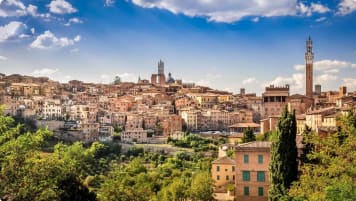History of the Maritime Republic of Amalfi
Italy beyond Rome could be just the Amalfi coast, food, wine, the Mediterranean and Southern Italy. Amalfi was though a powerful trading republic and challenger to Venice and Genoa. Learn more about this historic destination in this article that is part of the history of Italy. An Antipodean travel company serving World Travellers since 1983 with small group educational tours for senior couples and mature solo travellers.
23 Apr 22 · 7 mins read
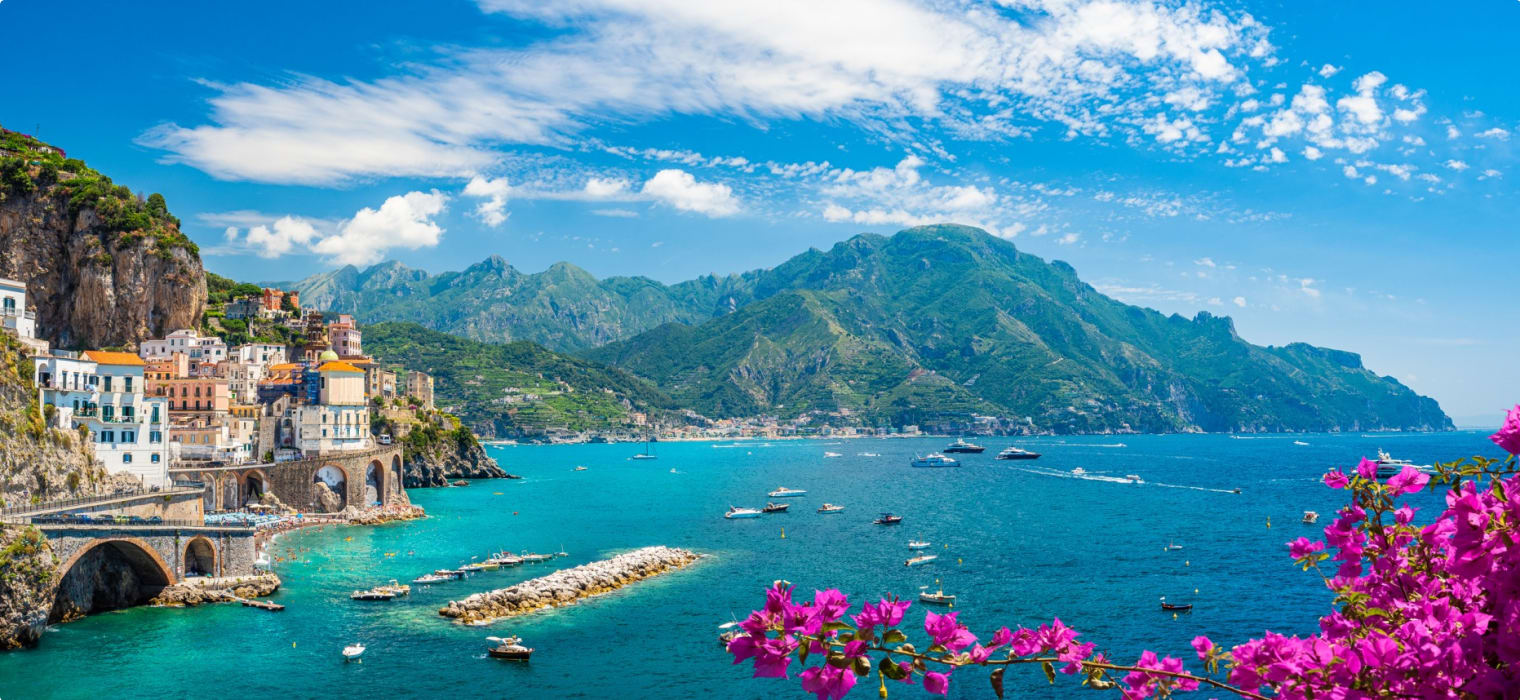
Amalfi Maritime Republic
By Marco Stojanovik
With a single main street winding upwards, and tiny alleyways that duck under and through its buildings, today’s Amalfi town seems like an unlikely rival to the great Italian maritime republics of Venice, Genoa, and Pisa. And yet, between roughly 850 and 1100, the town served as the capital of the Duchy of Amalfi, a militaristic and economic powerhouse that dominated Mediterranean and Italian trade, before being superseded by the other maritime republics of the North.
Of course, the Duchy of Amalfi’s territory consisted of more than just the tiny city of Amalfi, including a host of towns along today’s 50-kilometre stretch of coastline, known as the Amalfi Coast. Situated along the southern shore of the Sorrento Peninsula in the south of Italy, the stunning Amalfi Coast is surrounded by dramatic cliffs, turquoise waters, and spectacular views of coastal scenery, making it one of Italy’s most memorable destinations for a day trip or longer stay. You can join Odyssey Traveller on a guided tour of the Amalfi Coast as part of various tours to Italy for senior and mature travellers. Our best Amalfi Coast tours include our:
- Ancient History of Southern Italy & Sicily Tour (22 days)
- Heritage, Culture and History of Italy | Small Group Tours for Seniors (22 days)
- Heritage, Culture, History of Italy Short Tour (11 days)
This article explores the history of the Amalfi maritime republic to assist you on your Amalfi Coast tour. Much of the information from this article is drawn from David Abulafia’s The Great Sea: A Human History of the Mediterranean, as well as sources linked to throughout the article.

Origins and Birth of the Republic of Amalfi
There are several legends regarding the origins of Amalfi. The most popular is that it was founded by a group of Roman families in the time of Emperor Constantine, trying to make their way to Constantinople. While navigating the Ionian Sea, they were surprised by a violent storm and forced to run aground on a shore near Ragusa in Dalmatia. They stayed for a brief period and then returned to the sea, travelling on to make land between Palinuro and Pisciotto. Here they would settle a coastal village, naming it after the river that flowed there, Melphes (today the town of Melfi).
However, they were frequently threatened by the incursions of the Vandals, and within a few years they were forced to flee further north. They remained in this area, continuing to explore, and settling a number of towns. One of these they called Amalphia (“A-Melphes”) in memory of the abandoned village of Melphes – hence today’s town of Amalfi.
Over the fifth century, many Romans from the cities of Campania took refuge in the Lattari Mountains, fleeing a series of Germanic barbarian invasions. Some in turn settled in the small fishing village of Amalfi, transforming it into a city. The first written documentation of the city comes from 533, during the war between the Goths and the East Roman (Byzantine) Empire. With the victory of the Byzantine General Narsete over Teia, the Ostrogothic King of Italy, the city came under the rule of the Byzantine emperor, who granted the governance of the area to the duke of Naples.
In 596, Amalfi was appointed its first bishop. The bishop’s seat brought considerable wealth and provided to the defence of the city, allowing Amalfi to grow into a city-state in its own right. With this a powerful aristocracy of landowners emerged, eventually taking political power from the bishop.
Because of its position, along the southern borders of the Byzantine Duchy of Naples, the city served as an important defensive outpost and refuge against the incursions of the Lombard Duchy of Benevento. Eventually though, in 836, aided by the betrayal of a few local families, Sicard the Duke of Benevento would conquer the city and deport the inhabitants to Salerno.
The Amalfitan people, however, would reorganise themselves to rise up only a few years later. Taking advantage of the internal divisions of the Lombard court that led to the assassination of Duke Sicard in 839, the people were able to successfully regain the city on September 1, 839. This newly autonomous republic would assert its power until the end of the 11th century.
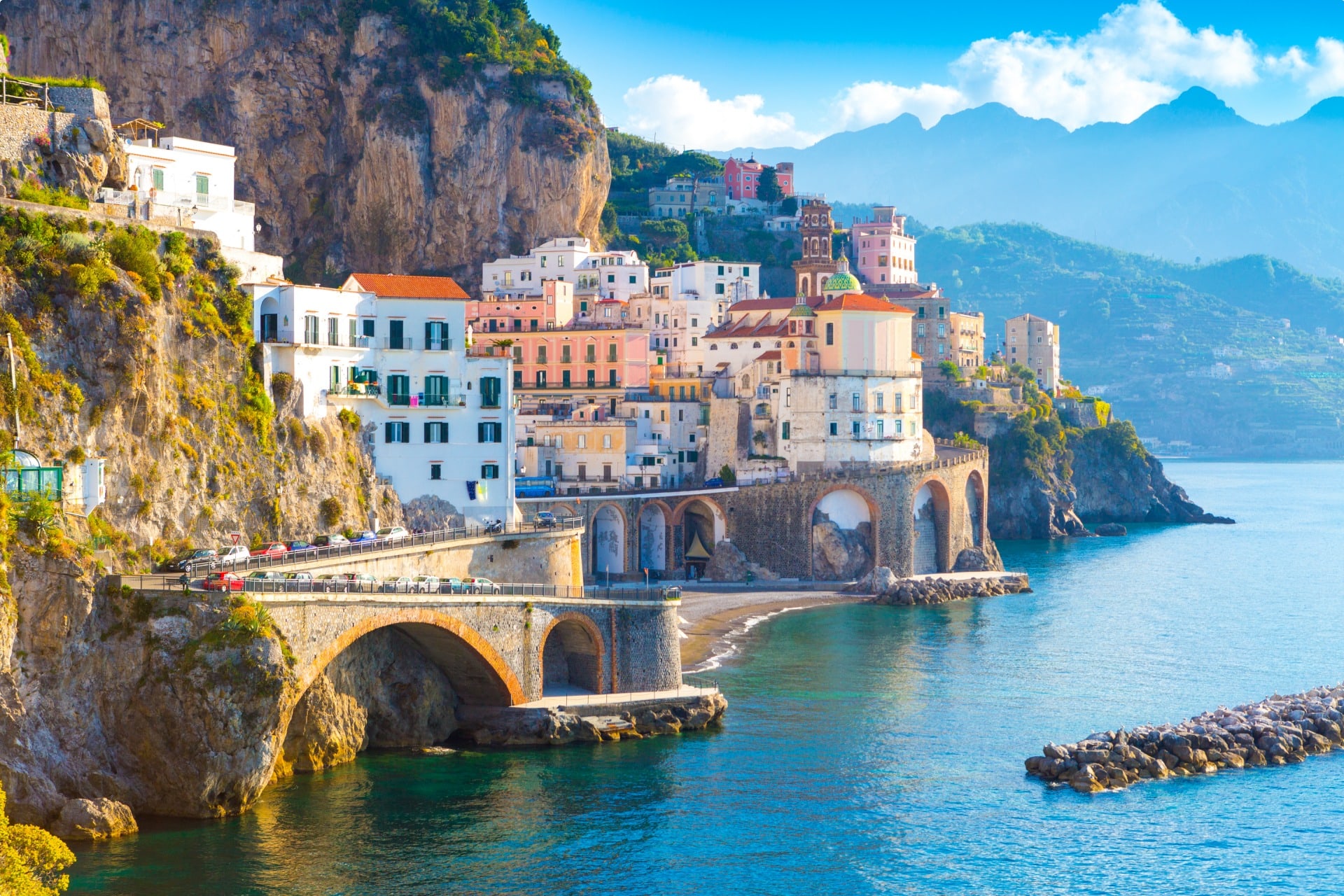
Amalfitan Ascendancy
At first, the Amalfi Republic was administered by two perfects elected annually. Eventually though, from 958, the republic would be ruled by dukes (doges) in a regime that became a ducal monarchy. Although formally the Byzantine emperors would approve the election of dukes, in reality the city was a free one, with its own laws, its own magistrates, and its own currency.
As an independent entity, the Amalfi State would grow in power and prestige, rivalling the other great powers of Pisa, Genoa, and Venice to follow. With a single main street winding upwards, and tiny alleyways that duck under and through its buildings, Amalfi may seem an unlikely rival to Venice. However, the state’s territory included more than just the tiny city of Amalfi. It was formed by a host of towns along the coast stretching from Catera to Positano and in the chain of Lattari Mountains, as well as the island of Capri and the small archipelago of Sirenuse. In short, the whole southern shore of the Sorrentine Peninsula, from Positano to the great monastery of the Santissima Trinità at La Cava, founded in 1025, was ‘Amalfi’.

Amalfi’s power was based on its powerful maritime presence, both military and commercial. From its earliest days, its military fleet had a series of great victories. Famously, in a naval battle off Ostia in 849, helped Pope Leo IV to defeat powerful Saracen navies and thereby prevent the sacking of Rome. For centuries, this event was regarded as the salvation of Rome; Christianity had been ‘defended’ from the Muslim Arabs.
However, there were times when the ruler of Amalfi found it beneficial to ally with the Saracens for defence and commercial interests. This alliance was unstable and fleeting though, ending after a violent battler in 1915, with the Saracens permanently banished from the Amalfitan territory.
Eventually, Amalfi merchants were able to wrestle away the trade monopoly in the Mediterranean from the Arabas. While the Republics of Pisa, Genoa, and Venice were still emerging, the Amalfitans became the first Italians to successfully establish extensive trade networks throughout the Mediterranean basin.
Amalfi’s trade passed through Italy, Arab North Africa, and the Byzantine Empire. In the first phase, Amalfi merchants traded timber, grain from its neighbours, salt from Sardinia, and slaves from the interior for gold dinars minted in Egypt and Syria. In the second phase, the merchants then used the gold to buy Byzantine silks, spices, precious stones, fabrics, and luxury goods. They resold these in the third phase, mostly in Italy, as far as Ravenna.
To aid the trade, the Amalfitans established mercantile colonies in Southern Italy, Northern Africa and the Middle East (in Turkey, Syria, and Egypt) in the 10th century. Their largest such colony, known as Bisanzio, was the first to be created in Constantinople, due to its strong economic ties with the Byzantine Empire. It had its own private harbour, churches, monasteries, and hospitals, all administered under the law of Amalfi.
Amalfi also left a lasting imprint further east, in the territory of the Fatimid Caliphate. This included the establishment of Christian outposts in Jerusalem, despite the city offering little commercial advantage. These outposts made it possible for the Benedictine monks to provide care for the pilgrims who in growing numbers set out from Europe – often by way of the ports of southern Italy – for the Holy Land.
An important contribution to the commercial success of Amalfi was its codification of maritime law, the Tabula de Amalpha (Amalfi tables), that was widely used by the Christian maritime nations of the time. These laws regulated the relations between shipmaster and shipmate, and between sailors and merchants. They remained in force throughout the Middle Ages.
The Merchants of Amalfi were also advanced in that they were using gold coins as early as the 9th century, while most of Italy still worked in a barter economy. Amalfi’s gold coins were created out of the melted-down profits of their trade in Africa. Resembling those of the Arabs, they reflected Amalfi’s closeness to mid-eastern cultures. The coins spread far, used through the Greek empire, Africa, and the Lombard kingdoms.
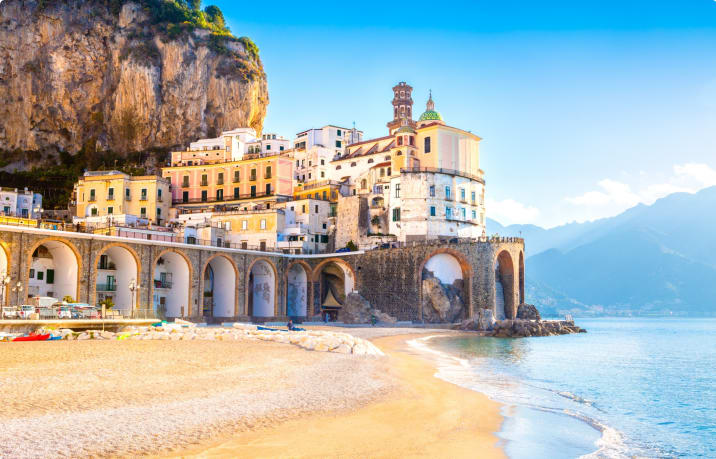
The Fall of Amalfi
With the inhabitants of Amalfi greatly enriched by its trade, it was not long before enemy powers contemplated conquering it. Eventually, in 1073, Amalfi would lose its independence, conquered by the Norman adventure Robert Guiscard, who took the title of “duke of the Amaliftans”. With this, Amalfi became one of the principal posts of the Normans, who were encamped in the south of Italy.
Amalfi successfully revolted in 1096, reverting to an independent republic, but this was put down in 1101. It revolted again in 1130 but was finally subdued and annexed by King Roger II of Sicily in 1131.
By this point, the balance of power in the Mediterranean was shifting to the Republics of Pisa and Genoa, both of which were eagerly expanding their territory. Pisan mercenaries, originally hired by the Amalfi to defend against Norman incursions, horrendously sacked the city in 1135. The city never recovered from this defeat and was subsequently completely taken over by the Pisans in 1137. From then on, the city rapidly declined in importance, soon replaced in its role as the main commercial hub of Campania by the Duchy of Naples.
Tour of the Amalfi Coast
On Odyssey Traveller’s small group tours of Southern Italy, you can experience the stunning views of the dazzling Amalfi coast landscape, where pastel villages tumble into azure blue seas. On a number of tours, we experience the awesomely stunning coastal scenery of the Amalfi Riviera, where beautiful villages such as Positano and Amalfi cling to the dramatic steep cliffs above the Gulf of Salerno. Amalfi Coast tour experiences include our:
- Ancient History of Southern Italy & Sicily Tour (22 days)
- Heritage, Culture and History of Italy | Small Group Tours for Seniors (22 days)
- Heritage, Culture, History of Italy Short Tour (11 days)
Odyssey Traveller has been serving global travellers since 1983 with educational tours of the history, culture, and architecture of our destinations designed for mature and senior travellers. We specialise in offering small group tours partnering with a local guide at each destination to provide a relaxed and comfortable pace and atmosphere that sets us apart from larger tour groups. Tours consist of small groups of between 6 and 12 people and are cost inclusive of all entrances, tipping and majority of meals. For more information, click here, and head to this page to make a booking.
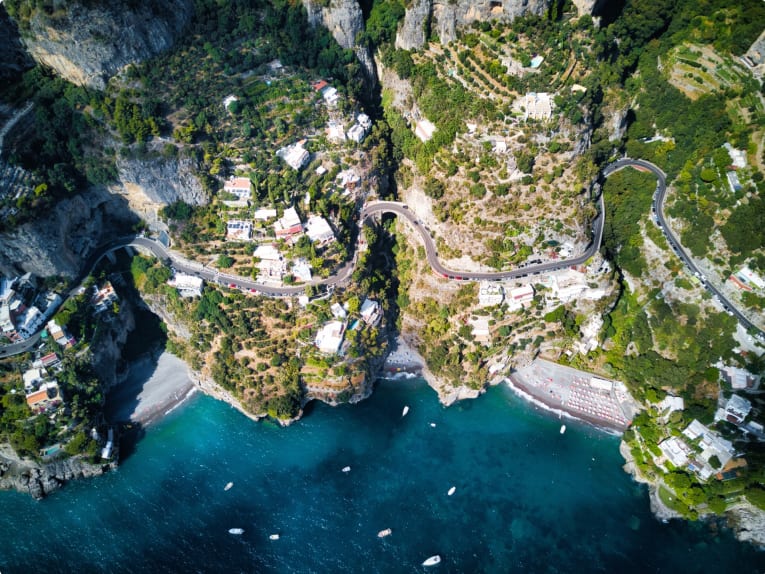
Articles about Italy published by Odyssey Traveller
- The Roman Empire
- Who were the Roman Emperors
- Questions About Italy
- Trip Advice for Travellers going to Italy
- 10 Great Books to Read Before You Visit Italy
- as well as more articles on Italy here
External articles to assist you on your visit to Italy
Related Tours
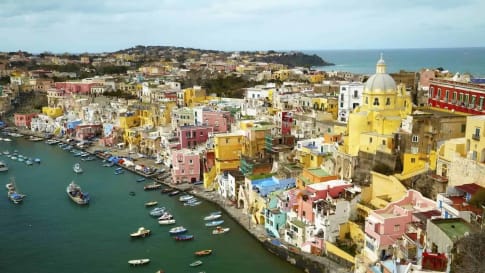
22 days
Jan, Apr, SepAncient History of Southern Italy & Sicily group tours
Visiting Italy
Our program for senior travellers, as well as featuring the rugged countryside of Southern Italy, also encompasses learning about the many civilisations that have shaped this land. We learn about the influence of the early Phoenicians, Greeks, Romans, Byzantines, Saracens, and Aragonese.
From A$16,995 AUD
View Tour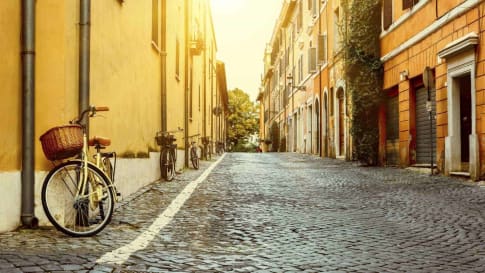
22 days
Sep, Apr, MarHeritage, Culture and History of Italy | Small Group Tours for Seniors
Visiting Italy
Rome, the world’s first superpower, lasted for almost a thousand years. In this small group tour for senior couples and solo travellers we thread our way through the Rome of the Emperors, then through the Italy of the Renaissance, Michelangelo, the Medici, and the Borgia. In the south, we visit the cosmopolitan city of Naples as well as Pompeii and the island retreat of Capri.
From A$13,695 AUD
View Tour
11 days
Sep, MayHeritage, culture, history of Italy, seniors small group - Short Tour
Visiting Italy
Odyssey's small group tour features the best of the Italian countryside as well as the great cities and icons of Italy. We will see the Renaissance cities of Florence, Pisa, and Lucca as well as the Umbrian medieval cities of Perugia.
From A$8,195 AUD
View Tour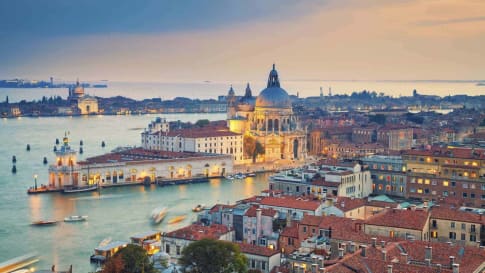
18 days
Aug, SepArt and History of Italy | Small Group Tour for seniors
Visiting Italy
Taken as a whole, Italian Civilization (which includes, of course, the splendid inheritance of Ancient Rome) is absolutely foundational to Western culture. Music, Painting, Sculpture, Architecture, Literature, Philosophy, Law and Politics all derive from Italy or were adapted and transformed through the medium of Italy.
From A$16,695 AUD
View Tour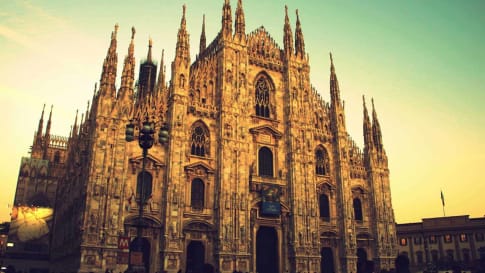
14 days
Sep, MayLakes and Landscapes of Northern Italy | Short Small Group Tour for Seniors
Visiting Italy
Our small group tour begins in the cosmopolitan city of Milan and ventures to 2 of the region's lakes - Garda and Maggiore. Our tour uncovers a wealth of natural beauty, castles, serene waters, snow-capped mountains, and breathtaking scenery.
From A$9,225 AUD
View Tour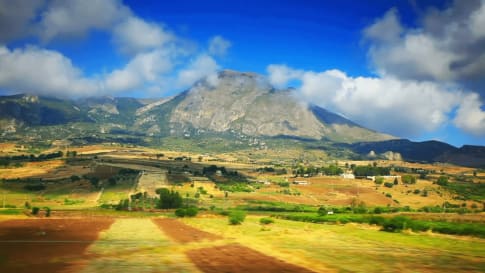
25 days
Apr, Sep, OctMediterranean Islands Small Group Tour | Malta, Sicily, Sardinia and Corsica
Visiting Corsica, Italy
For centuries Malta, Sicily, Sardinia and Corsica held the key to the Mediterranean. Unlike other European tour companies, Odyssey provides a tour leader and local guides to share detailed itineraries about the destinations on these small group journeys. This escorted tour of western Mediterranean explores the geography, history, culture and peoples of these 4 islands. Small group tour for mature couples and solo travellers. A reasonable single supplement is charged.
From A$19,750 AUD
View Tour
13 days
AugVillages of Italy - short small group tours
Visiting Italy
Roam the villages of the northern Dolomites, in Italy, home to more than 40 glaciers. A small group tour is a great way to get to know Italy, or reacquaint yourself with its beauty and hidden gems. Travel with like minded mature couples or solo travellers.
From A$10,895 AUD
View Tour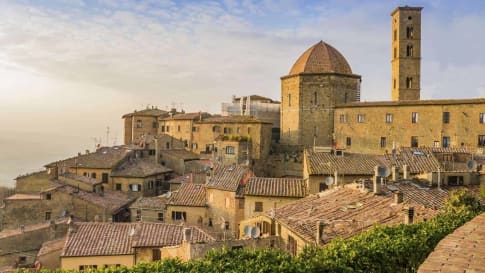
26 days
Aug, SepVillages of Italy | small group tours Italy
Visiting Italy
Explore Italy in a small group tour. Italy is the most Mediterranean of nations and as mature and aged as many of its red wines. In terms of being a nation, it is even younger than New Zealand. This is often hard to believe, bearing in mind that Italy gave rise to Europe’s first global empire, which endured for approximately 2,000 years, the Romans. The new constantly brushes with the old and in doing so generates sparks that makes any sojourn in Italy a deeply textured experience.
From A$16,775 AUD
View Tour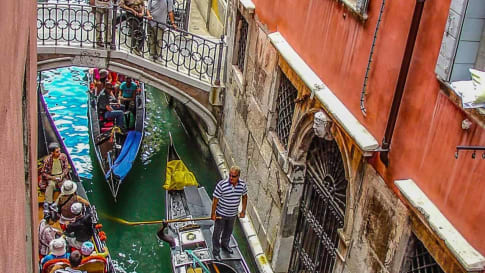
18 days
Sep, AprSmall group tour to Venice and Genoa
Visiting Italy
City pairs and rivalries exist. When spice, gold, steel swords and cloth where major commodities in the Mediterranean then Venice and Genoa fought for market share. Venice offered mercenaries, Genoa, banks. Italian history tour for those interested in joining a small group educational tour for senior couple and mature solo travellers.
From A$10,995 AUD
View TourRelated Articles about Italy

Around the World in Six Coffees: Italy, France, Japan, China, Morocco & Argentina
Around the World in Six Coffees: Italy, France, Japan, China, Morocco & Argentina Order a cappuccino in Italy after 11am and expect to receive strange looks. In Argentina, don’t be surprised when your coffee order…
Cinque Terre, Italian Riviera
La Spezia, Portovenere and the Cinque Terre The eastern Ligurian Riviera between Cinque Terre and Portovenere is a cultural site of outstanding value, inscribed as a UNESCO World Heritage Site in 1997 along with the…

Early History of Sicily: From the Phoenicians to the Arab Conquest
Early History of Sicily: From the Phoenicians to the Arab Conquest (800 BC to the 10th Century) Sicily in Southern Italy is the largest island in the Mediterranean, separated from the mainland by the Strait…
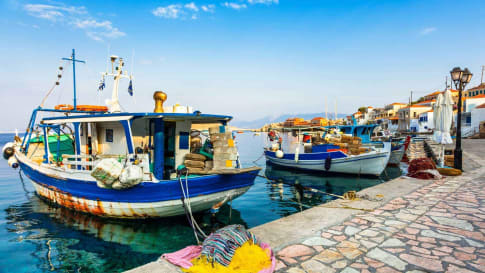
Empires Crossing the Mediterranean: 1130-1300
As a sea connecting continents and stretching from the Atlantic Ocean in the west to Asia in the east, the Mediterranean has for centuries been a centre of trade and exploration.
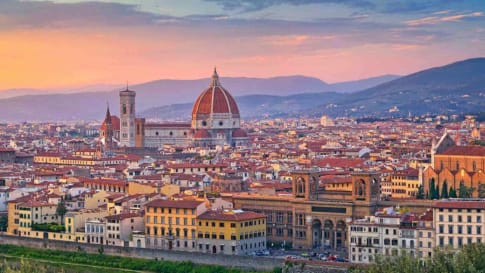
History of a City: Florence, Italy
Florence or Firenze, article provides an overview of the history from inception from the Romans to Mussolini with plenty of the Renaissance covered. Includes a list of Museums and places to see in Tuscany. Background material for a small group package tour to Italy or long stay in Florence.
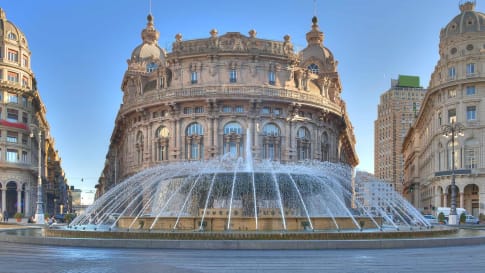
History of Genoa, Rival to Venice
In this article, we will look at the history of Genoa, and its rivalry with Venice that led to several wars fought between the two city-states in the 12th to 14th centuries.
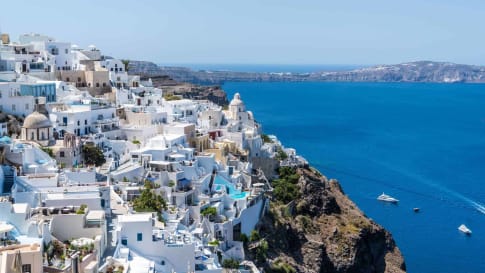
History of Santorini
History of Santorini: From the Minoans to the Greek Republic The history of the Greek islands of Santorini (or Thera) stretches back to the Neolithic Era more than 3,000 years ago. A place of great importance…

Mediterranean Islands: Malta, Sicily, Sardinia and Corsica
Malta, Sicily, Sardinia and Corsica: An Educational Journey through Western Mediterranean This article takes you on a journey through the beautiful islands of the western Mediterranean – Malta, Sicily, Sardinia and Corsica – by tracing…

Palermo, Sicily
Palermo, Sicily Palermo Cathedral mixes Arab and Norman styles, a testament to Sicily’s multicultural history. The capital of Sicily and the island’s chaotic heart, Palermo is where civilisations – Arab, Norman, Italian – collide. Palermo…
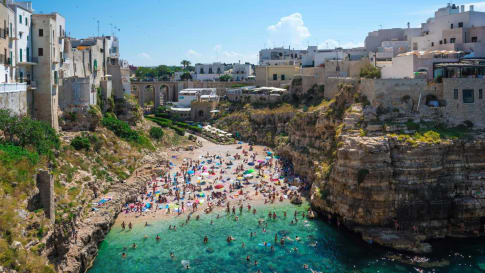
Southern Italy
Southern Italy: from Magna Graecia to Italian Unification When people think of Italy, Rome, Venice, and Florence often come to mind first. Yet, the country offers much more beyond its northern attractions. Venturing south from…
